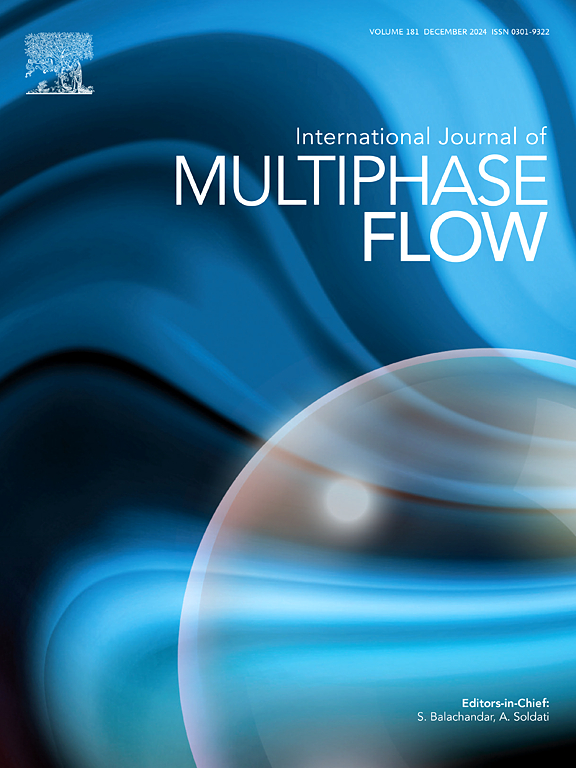Analysis of the effect of blade inclination angle on the performance of oblique spiral cavitating nozzle
IF 3.6
2区 工程技术
Q1 MECHANICS
International Journal of Multiphase Flow
Pub Date : 2025-01-20
DOI:10.1016/j.ijmultiphaseflow.2025.105141
引用次数: 0
Abstract
The oblique spiral cavitating nozzle (OSCN) has gained significant attention due to its efficient cavitation generation capability and exceptional rock-breaking performance, providing an effective solution for the efficient extraction of natural gas hydrates (NGH). As a crucial component of OSCN, the swirler enhances the nozzle's cavitation effect and improves its rock-breaking capacity. However, there is a lack of sufficient research on the influence of the swirler's blade inclination angle (θ) on the performance of OSCN. To determine the optimal blade inclination angle for maximizing nozzle performance, this study established a simulation model for gas-liquid two-phase flow using the Mixture multiphase flow model, RNG k-ε turbulence model, and Schnerr-Sauer cavitation model. This model was utilized to simulate the gas phase distribution, velocity distribution, and pressure distribution within the OSCN jet field. Based on these simulations, the OSCN's cavitation performance, velocity level, entrainment performance, and energy consumption are analyzed at various θ values. The analysis results indicated that the OSCN exhibited optimal cavitation performance at θ = 0°, optimal velocity level at θ = -5°, lowest energy consumption at θ = -15°, and best entrainment performance at θ = -25°. Additionally, it is concluded that θ has a smaller impact on the OSCN's cavitation performance compared to other performance factors. Subsequently, NGH erosion experiments were conducted to further optimize the θ of OSCN. The experimental results demonstrated that, under the same pump pressure and similar energy consumption, the OSCN with θ = -15° exhibited the best comprehensive drilling performance.

求助全文
约1分钟内获得全文
求助全文
来源期刊
CiteScore
7.30
自引率
10.50%
发文量
244
审稿时长
4 months
期刊介绍:
The International Journal of Multiphase Flow publishes analytical, numerical and experimental articles of lasting interest. The scope of the journal includes all aspects of mass, momentum and energy exchange phenomena among different phases such as occur in disperse flows, gas–liquid and liquid–liquid flows, flows in porous media, boiling, granular flows and others.
The journal publishes full papers, brief communications and conference announcements.

 求助内容:
求助内容: 应助结果提醒方式:
应助结果提醒方式:


